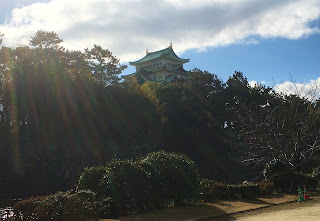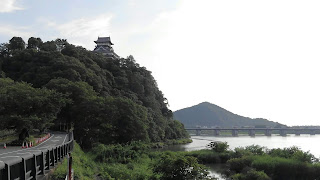Nagoya Castle and Sekigahara Battlefield are Japan’s best historical sites to visit at least once
According to the overnight travel statistics survey released by the Japan Tourism Agency, the total number of Japanese overnight guests in June 2022 increased by 72.2% compared to the same month of the previous year. The number was 6.5% decrease compared to the same month of 2019 before the spread of coronavirus infection. On the other hand, the number of foreigners increased by 168.4% compared to the same month of the previous year, although it remained far less level than that of 2019 decreasing 93.1%. Combining Japanese and foreigners, the number of overnight guests in June rose 73.4% year on year at 34.51 million. On 10 June 2022, Japan finally started allowing international tourists into the country for the first time in two years after the COVID-19 pandemic began hoping visitors come back to tourist hot spots.
Nagoya Castle is praised as an authentic reproduction of early modern Japanese castle construction
Among well known destinations for Japanese and foreign travelers, castles and battlefields of the Sengoku period, the Warring States period in Japan, are recently getting more and more popular. There are many castles and historic sites in Japan that have played an important role in the country’s history attracting travelers who are interested in castles and their related history. Sightseeing tours and local events that allow visitors to discover colorful stories about those sites are often offered by English and other languages.
One of these popular tourist destinations is Nagoya Castle. Nagoya Castle was completed in 1615 by the Shogun, Tokugawa Ieyasu who founded a dynasty that ruled Japan for more than 200 years from 1603. Topped with golden shachihoko, votive tiger-fish roof ornament and boasting the largest floor space of any tower keep ever, Nagoya Castle and its magnificent Hommaru Palace were operated as a military facility. Nagoya Castle was Japan’s first castle to be designated a National Treasure. After wartime air raid destruction, it was designated a National Historic Site.
The Hommaru Palace served as the official residence and administrative offices of the Owari Tokugawa clan. Along with the tower keeps, the Hommaru Palace was among the first castle structures to be designated a National Treasure, although it was destroyed in the wartime air raids of 1945. Visitors and guests would enter the Hommaru Palace through the entrance to rooms featuring walls and sliding screen doors decorated with art works of ferocious looking tigers and leopards on gold leaf. Those the rooms were also known as the "Tiger Rooms".
Sekigahara Battlefield and Inuyama Castle are Niyama Japan’s best castles to visit at least once
Among other historical sites in the Chubu region, there is Inuyama Castle which has the oldest wooden castle tower in Japan, built in 1537 by Oda Nobuyasu, an uncle of Oda Nobunaga who was one of the most famous warlords. Inuyama City, Aichi Prefecture has played a role as a strategic battle ground in the Warring States period and developed as a castle town in the Edo period. Because of those history many historical footprints still remain around the city. There is a corridor surrounding the top floor of the castle which provides visitors with amazing view of Nobi Plain far beyond around the area. When weather is fine beautiful view of Kiso River, Mt. Ontake, Gifu Castle and skyscrapers around Nagoya Station welcome those who reach the top floor.
Another famous historical site to be worthy of special mention is Sekigahara Battlefield. The Battle of Sekigahara is often called the “decisive battle” because it substantially brought a conclusion about who would rule Japan. The large scale armies with a combined total of over 150,000 soldiers led by Tokugawa Ieyasu in the east and Ishida Mitsunari in the west entered into a fierce conflict at Sekigahara, and the ascendancy moved from the Toyotomi to the Tokugawa clan. On an October day in 1600, in the southwestern Gifu town of Sekigahara—then a dividing line between eastern and western Japanese culture—centuries of bloody struggle came to a head. Two armies clashed, the eastern forces of Tokugawa Ieyasu and the western forces of Ishida Mitsunari. Though outnumbered, Tokugawa triumphed and would go on to unify Japan, establishing the new government of Edo in 1603 and ushering in centuries of peace.
At the final encampment site of Ieyasu at the historic battlefield of Sekigahara, Gifu Sekigahara Battlefield Memorial Museum has been newly built with Ground Vision screen and theater. These facilities provide visitors with first-hand experience on how the battle actually unfolded. Visitors may reach inside the minds of the feudal warlords who took part in the battle through the programs. There are also explanatory drawings such as force maps and battle formation drawings. Walking around the battle fields, visitors can fully enjoy a Memorial Museum that complements the historical sites experience.
.png)

.jpg)




Comments
Post a Comment